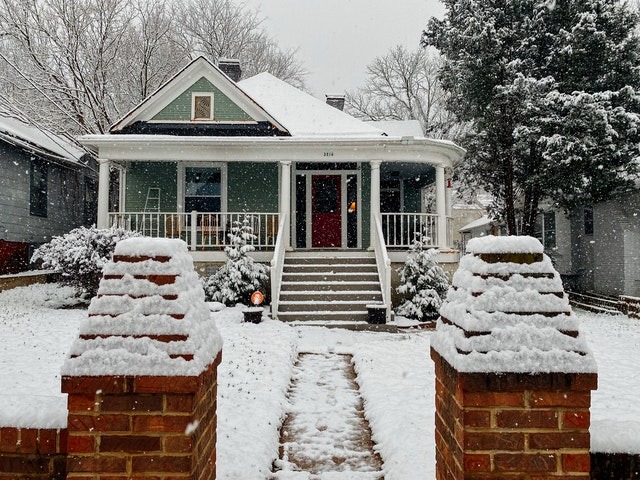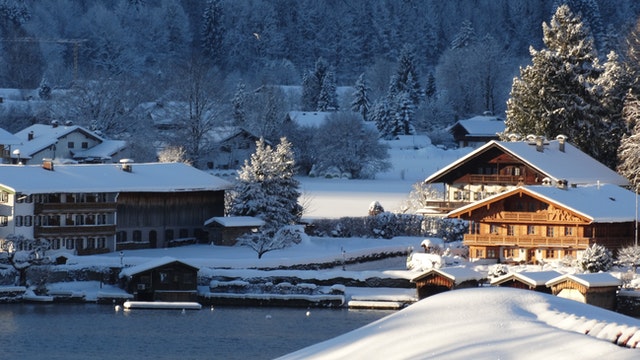Winterizing a home to protect you from snow and freezing temperatures can help your home withstand the ups and downs of Mother Nature’s erratic moods.
Contents
Are your home and apartment ready for the coming winter months?
Winter can signal a drop in temperatures and the possibility of unpredictable weather events, including several inches of dangerous snow and ice. Winterizing your home – from environments that expect snow and freezing temperatures for months to regions that experience unpredictable cold and precipitation – can help keep your home ready for the season.
Tips to prepare the interior of your home for winter
The comforts of a cozy and warm home in the winter can help you forget about short days and multiple layers of clothing. These tips can help you weather the winter season.
. Get your boiler inspected: Since your heating system will probably be on all the time during the winter, you should ask to have it checked every year to make it work efficiently and prevent CO from entering your home. Remember to change your Heating, Ventilation, and Air Conditioning (HVAC) filters every month.
. Inspect the insulation in the attic and basement: Hot air rises and leaves the house through the roof, so you should focus on insulating the ceilings. Insulating any basements you have will help keep the floor in your home warm.
. Seal areas where there are potential leaks: Before the cold hits, take time to insulate your home or apartment so that the winter cold does not enter. Seal areas around recessed lights, attic hatch, and pipe ducts could allow warm air from the living space below to enter the attic.
Allow for ventilation. Properly ventilating and insulating the attic and forming a sound hermetically sealed barrier between the attic and the home interior will work together to prevent ice build-up.
. Use window insulation kits: If you don’t have double-glazed windows or shutters, purchase a thermal insulation sheet kit from a local hardware store. These will only last one season, but they help with energy efficiency and stop winter’s cold drafts. Try these updates to help make your windows energy efficient.
. Install shutters;
. Hang curtains;
. Add putty to windows;
. Use weather stripping;
. Creates an outside shadow;
. Replace your windows.

. Apply weather-stripping: Add weather-stripping to doors and caulk gaps in windows. Make sure all windows are locked shut to keep out as much cold air as possible.
. Use a fireplace: If you plan to use it, schedule a professional inspection and service to ensure your fireplace is clean of debris and that the damper opens, closes, and is tightly sealed.
. Insulate the pipes: Pipes located in attics, crawl spaces, basements, and near exterior walls can be prone to freezing in extreme temperatures. Insulate to help prevent your pipes from freezing. When the forecast is for frigid temperatures:
. Let hot and cold water faucets drip overnight.
. Keep cabinet doors open to allow hot air to circulate in places like under sinks. If you open cabinet doors, be sure to remove anything that could endanger children’s safety, such as household cleaners.
. Finally: Check with your utility company about an energy assessment to determine where your home is losing energy and which smart energy investments would make sense.
. Tips: Smart home apps and amenities, such as a smart thermostat, can help you integrate winter management into your home, your daily routine, cut energy costs, and keep your home cozy. Preparing your home for winter can help you enjoy your days indoors, knowing that you have done what you can to protect the space where you live throughout the season and aid in your home’s overall maintenance and longevity.
Tips for maintaining the exterior of the house in winter
Even in cold weather, your yard still needs maintenance, and you have to make sure your home is winterized.
. Tool review: Make sure your snow shovels don’t have cracks. Schedule the annual adjustment of your snow thrower if you have one.
. Prepare outdoor faucets against winter: Disconnect all hoses or devices connected to outside taps. Make sure to drain any water left in the pipes: Have the buried automatic sprinkler systems flushed and shut off the water to the outdoor spigots.
. Patio furniture: Wash the upholstery and frames in northern climates; store both furniture and cushions in a moisture-free location.
. Install storm shutters and storm doors: Shutters and storm doors add a layer of protection to your home and increase energy efficiency.
. Clean up any yard debris and trash: Remove any debris or branches from around the HVAC unit, gas meters, basement windows, and the dryer vent. Cut dry or drying branches and any branches that touch the roof or siding. When it’s windy, branches could rub or scrape the surfaces of your home and cause damage. They could also fall during a storm or break under the weight of snow or ice.
. Firewood: Store the firewood in a dry place, at least 30 feet from your home, to avoid the risk of fire.
. Visually inspect your roof every year: See if tiles are missing or damaged; consult with a roofing professional if necessary. Make sure all gutters are clean and securely attached to help prevent ice build-up.
. Pools and Jacuzzis: In northern climates, close and secure both the pool and hot tub.
. Exterior lights: Make sure the lights on the doors (front, rear, and garage) are working. Replace any burned-out light bulbs with more efficient LED options.
. Anticipate pests: Walk around your home to see if the foundation has small cracks or openings where mice or other problems can tunnel. In the winter is when they seek the heat of your home, so you must seal any possible entrance.
. Sidewalk and entrance to the garage: Shovel snow from the sidewalk and garage, and then apply a surface de-ice to prevent slips and falls.
Tips for preparing for a winter storm
During the winter months, blackouts and snow blocks can occur, so take the time to prepare with your family for such emergencies. Having the following items ready will help you get through the situation safely:
. Flashlights or flashlights that run on batteries and extra batteries;
. Drinking water and bottled water;
. Nonperishable food; keep your pantry stocked: It’s a good idea to keep your home stocked with groceries all winter. If the power goes out, you’ll want to have plenty of extra water and nonperishable foods that can be prepared without cooking.
. Extra blankets, sleeping bags, and winter coats;
. The phone numbers of the utility companies;
. Cell phone and portable charger;
. Prescription drugs, drugs, and other medications;
. A battery-operated radio, with extra batteries, to listen to local emergency instructions;
. Backup batteries to protect your computer and other necessary electronic equipment;
. A first aid kit;
. And you can also consider buying a generator. A permanent or portable generator can provide temporary power when and where you need it;
Inspect winter decorations after a winter storm
This is the season to be festive, but remember to stay safe with your holiday decorations. Inspect your light shield wires before changing them – they can be frayed – and be an electrical fire hazard. The same goes for the indoor Christmas tree – always check the light extensions for any signs of wear and tear in storage. If you have a real Christmas tree, keep it watered as dry trees catch fire more easily. Check with your local municipality for instructions on how to dispose of the tree once the New Year rolls around.







